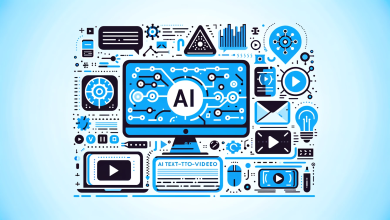
How AI is Transforming Mental Health Treatment: From Teletherapy to Intelligent Clinical Documentation
The mental health crisis has reached unprecedented levels. The World Health Organization reports that nearly one billion people worldwide live with a mental disorder, yet traditional treatment systems struggle to meet this demand. Long wait times, geographic barriers, provider shortages, and persistent stigma create massive gaps in mental healthcare access.
Artificial intelligence and digital technology are changing everything. From teletherapy platforms connecting patients with therapists across distances to machine learning systems predicting suicide risk, technological innovation is breaking down barriers and expanding access in ways previously unimaginable. This transformation isn’t just about convenience. It’s fundamentally reshaping mental health treatment, making care more accessible, affordable, and effective while addressing critical operational challenges facing healthcare providers.
The Teletherapy Revolution: Breaking Geographic Barriers
The COVID-19 pandemic forced mental health care online almost overnight. What began as an emergency adaptation has become a permanent transformation. CDC data shows that telehealth visits increased by 154% during the early pandemic period, with mental health services seeing particularly dramatic adoption. Today, approximately 40% of mental health and substance use therapy sessions occur virtually, compared to less than 1% before the pandemic.
Modern teletherapy platforms offer secure, HIPAA-compliant video conferencing specifically designed for mental health treatment. Unlike consumer video tools, these specialized platforms include end-to-end encryption, integrated scheduling and billing, and crisis protocols for emergencies.
The benefits extend far beyond convenience. Rural patients who previously traveled hours to see specialists can now access top providers from home. The intimidation of walking into a therapist’s office disappears when therapy happens in familiar surroundings. Working parents can attend sessions during lunch breaks without commuting. Patients maintain therapeutic momentum even during moves, travel, or illness.
Research shows patient satisfaction rates for teletherapy consistently exceed 80%, with outcomes comparable to in-person treatment for many conditions. More than 86% of teletherapy users report satisfaction with their experiences, indicating high acceptance of this digital delivery model.
Challenges remain: technology barriers exclude those without reliable internet or devices, therapists may miss subtle body language cues, and crisis management becomes more complex across geographic distances. Professional licensing limitations also complicate care for patients who travel frequently.
The future isn’t fully virtual or fully in-person. It’s hybrid. Most therapists now offer both modalities, allowing patients to choose based on preference and circumstances. This flexibility represents the best of both worlds and demonstrates how AI-enabled platforms are creating new service delivery models in healthcare.
Digital Therapeutics: Apps as Medicine
Beyond video therapy, a new category has emerged: digital therapeutics. These are software-based treatments delivering evidence-based interventions through apps and digital platforms. Unlike general wellness apps, digital therapeutics are clinically validated, often FDA-cleared, and prescribed by healthcare providers.
Examples include:
- CBT-based apps like Woebot that use conversational AI to deliver cognitive restructuring exercises
- Addiction treatment apps providing relapse prevention skills and community support
- Insomnia apps delivering CBT-I, the gold-standard treatment for chronic sleep problems
- PTSD management apps offering exposure therapy exercises and symptom tracking
Meta-analyses show digital CBT interventions produce outcomes comparable to in-person therapy for mild to moderate depression and anxiety. The accessibility benefits are substantial. Patients receive immediate support without wait times or geographic constraints.
Challenges include high dropout rates (25-50% abandon apps within two weeks), limitations for severe mental illness, and difficulty distinguishing evidence-based therapeutics from unvalidated wellness apps. The AI and machine learning algorithms powering these applications continue to improve, with better personalization and engagement strategies emerging from ongoing research.
AI-Powered Screening and Suicide Prevention
Artificial intelligence excels at identifying patterns humans might miss. Researchers are developing AI systems that analyze speech patterns, social media activity, wearable sensor data, and smartphone usage to detect mental health concerns before they become crises.
The most impactful application is suicide risk prediction. Traditional assessment relies on patient self-report and clinical judgment, both imperfect. AI analyzes electronic health records to identify patients at elevated risk, sometimes weeks or months before suicide attempts.
The U.S. Veterans Administration uses machine learning to identify high-risk veterans, triggering enhanced monitoring and outreach. Some hospitals screen all patients with AI algorithms, flagging those needing immediate psychiatric evaluation.
While not perfect (false positives and negatives remain concerns), these systems catch at-risk individuals who might otherwise slip through traditional screening cracks. The predictive models continue improving as they process more data and incorporate additional variables.
Ethical concerns include algorithmic bias. AI trained on non-diverse datasets may fail minority populations. Privacy issues with continuous monitoring and risks of over-reliance on AI recommendations also pose challenges. These concerns highlight the importance of responsible AI development and deployment in healthcare settings.
AI Chatbots: Always-Available Support
AI-powered chatbots provide text-based mental health support 24/7. Using natural language processing, they assess symptoms, deliver CBT exercises, teach coping skills, provide crisis resources, and offer judgment-free listening.
Benefits include immediate access (critical during acute distress), reduced stigma (some feel more comfortable disclosing to bots), perfect consistency in delivering interventions, and massive scalability addressing provider shortages.
Research shows chatbot-delivered CBT reduces symptoms of depression and anxiety in mild to moderate cases, with high user satisfaction among younger populations. The conversational AI technology underlying these chatbots has advanced significantly, enabling more natural and contextually appropriate responses.
Limitations are significant. AI cannot match human therapists in understanding context or responding to complex situations. Crisis management carries risks, and the therapeutic relationship, a critical healing component, cannot be replicated by algorithms.
Chatbots will likely fill specific niches: first-line support while waiting for appointments, after-hours crisis stabilization, maintenance between therapy sessions, and psychoeducation. They will not replace human therapists but will complement them in a comprehensive care ecosystem.
Streamlining Clinical Documentation with AI: A Game-Changer for Provider Efficiency
One of the most time-consuming aspects of mental health practice is clinical documentation. Therapists spend 2-3 hours weekly writing session notes, treatment plans, and progress reports. This is time that could be spent with patients. This paperwork burden significantly contributes to provider burnout, which has reached crisis levels in behavioral health.
AI-powered documentation tools are transforming this challenge. These platforms use speech recognition and natural language processing to transform therapy sessions into structured clinical notes automatically.
The process works through:
- Real-time transcription during or after sessions
- Clinical intelligence that identifies relevant information (symptoms, interventions, patient responses)
- Structured note generation in required formats
- Integration with electronic health record (EHR) systems
Many mental health professionals use standardized frameworks like GIRP notes template methods (Goal, Intervention, Response, Plan) to structure their documentation. AI tools can automatically generate notes in these formats, organizing session content according to:
- Treatment goals addressed during the session
- Therapeutic interventions employed
- Patient response to interventions
- Plans for ongoing treatment
Advanced AI systems learn individual therapist documentation styles, adapting to preferred terminology and organizational preferences. The machine learning algorithms analyze thousands of notes to understand clinical language patterns and documentation best practices.
Benefits are substantial:
Time Savings: Therapists reduce documentation time from 20-30 minutes per session to just 5-10 minutes of review. Over a full caseload, this reclaims hours weekly. This time can be redirected to patient care or used to reduce overall provider workload.
Improved Quality: AI doesn’t forget details or overlook information. Documentation becomes more comprehensive and consistent, capturing therapeutic nuances that might be missed in rushed manual note-taking.
Reduced Burnout: Eliminating tedious paperwork helps providers maintain enthusiasm for direct patient care. This addresses one of the primary drivers of mental health professional attrition.
Better Patient Focus: During sessions, therapists focus entirely on patients rather than dividing attention with note-taking. This improves therapeutic presence and the quality of the therapeutic relationship.
Compliance Assurance: AI ensures documentation meets regulatory and insurance requirements, reducing audit risk and claim denials. The systems are programmed with current compliance standards and update automatically as requirements change.
Business Intelligence: Aggregated, de-identified data can provide insights into practice patterns, treatment effectiveness, and operational efficiency. This helps practices make data-driven decisions.
Privacy remains paramount. These tools must meet HIPAA compliance with end-to-end encryption and secure storage. Most platforms immediately delete recordings after transcription, retaining only de-identified notes. The AI processing typically occurs in secure cloud environments with enterprise-grade security protocols.
Ethical considerations include informed consent. Patients must understand AI processes their conversations. The therapist’s responsibility is also critical; providers remain fully responsible for documentation accuracy despite AI assistance. The human clinician always maintains final oversight and editing authority.
The market for AI clinical documentation tools is growing rapidly, with multiple vendors competing to offer the most accurate transcription, best clinical intelligence, and smoothest workflow integration. Early adopters report significant ROI through time savings and improved billing compliance.
Virtual Reality: Immersive Therapy Experiences
Virtual reality creates entirely new therapeutic possibilities, particularly for anxiety disorders and PTSD. VR exposure therapy allows patients to confront feared situations in safe, controlled environments:
- Fear of heights: virtual ledges and rooftops
- Social anxiety: virtual presentations to digital audiences
- PTSD: controlled military environment simulations
- Flying phobia: virtual flights with adjustable turbulence
- Agoraphobia: crowded virtual stores and public spaces
Advantages include complete safety, precise therapist control over scenario intensity, unlimited repeatability, and feasibility of exposures impractical in real life.
Research demonstrates VR exposure therapy equals real-world exposure effectiveness for many conditions, with added benefits of greater control and patient comfort. The immersive nature of VR creates powerful therapeutic experiences while maintaining safety boundaries.
Hospitals also use VR for pre-procedure anxiety reduction, chronic pain management, and therapeutic respite from medical environments. The technology continues advancing, with higher resolution displays, better motion tracking, and more sophisticated virtual environments.
Wearable Technology and Passive Monitoring
Smartwatches and fitness trackers collect continuous data about sleep, activity, heart rate variability, and movement patterns. All of these metrics are relevant to mental health. Machine learning algorithms analyze these patterns to identify early signs of depressive episodes, manic episode onset, anxiety escalation, or medication adherence issues.
Applications include:
- Mood disorder management (predicting bipolar episodes before they emerge)
- Anxiety monitoring with real-time biofeedback
- Schizophrenia relapse prevention
- Objective treatment effectiveness monitoring
The AI models powering these applications can detect subtle physiological changes that precede symptomatic episodes, enabling early intervention. This represents a shift from reactive to proactive mental healthcare.
Limitations include data overload, potentially overwhelming users, false alarms from normal fluctuations, privacy concerns with continuous monitoring, and correlation versus causation challenges. The regulatory landscape around these AI-enabled medical devices is still evolving.
Ethical Considerations in AI-Powered Mental Healthcare
As AI transforms mental health treatment, critical challenges emerge:
Data Privacy: Mental health data is uniquely sensitive. Stronger regulations, robust encryption, and clear consent processes are essential. Organizations must implement comprehensive data governance frameworks.
Algorithmic Bias: AI trained predominantly on limited populations may perform poorly for minorities, risking misdiagnosis and exacerbating disparities. Diverse training datasets and ongoing bias auditing are crucial.
Digital Divide: AI technology requires internet access, devices, and digital literacy. These are resources not universally available, potentially excluding vulnerable populations who need care most.
Preserving Human Connection: As AI takes on more functions, we must maintain empathy, compassion, and authentic connection, which remain essential to healing. The goal is augmentation, not replacement.
Transparency and Explainability: Healthcare providers and patients need to understand how AI systems reach conclusions. “Black box” algorithms that can’t explain their reasoning create trust and accountability issues.
The Future of AI in Mental Health Technology
Several trends will shape the future:
Platform Integration: Comprehensive systems combining teletherapy, AI documentation, symptom tracking, and treatment recommendations in unified platforms.
Predictive Analytics: More sophisticated AI preventing crises before they occur through better pattern recognition across multiple data streams.
Personalized Treatment: Machine learning matches patients to optimal interventions based on characteristics, treatment history, and predicted response patterns.
Technology-Facilitated Peer Support: AI-powered platforms connecting patients with similar experiences for community support, complementing professional care.
Emerging Neurotechnology: Brain-computer interfaces and neurostimulation offer new options for treatment-resistant conditions.
Ambient Clinical Intelligence: AI systems that passively capture clinical encounters without requiring providers to interact with technology during patient care.
Conclusion: AI as Tool, Not Replacement
Artificial intelligence is undeniably transforming mental health treatment, breaking down barriers and creating unprecedented possibilities. From teletherapy enabling rural access to AI documentation to reclaiming therapists’ time to algorithms predicting suicide risk, innovation reshapes every aspect of mental healthcare.
Yet technology is a tool, not a panacea. Its value lies in thoughtful implementation that preserves the human elements of empathy and connection that remain irreplaceable. The future isn’t technology replacing humans. It’s technology empowering humans to provide better, more accessible, and more effective care to more people.
The mental health crisis demands bold solutions. Artificial intelligence offers unprecedented opportunities to meet this challenge. By embracing innovation while maintaining commitment to compassionate, evidence-based care, we can create a future where mental health support is accessible to everyone who needs it, whenever they need it.
The transformation is underway. The question isn’t whether AI will change mental health treatment. It already has. The question is how we harness this transformation to create a more just, effective, and humane mental healthcare system for all. For technology leaders, healthcare executives, and AI innovators, the opportunity to drive meaningful change in this critical sector has never been greater.






